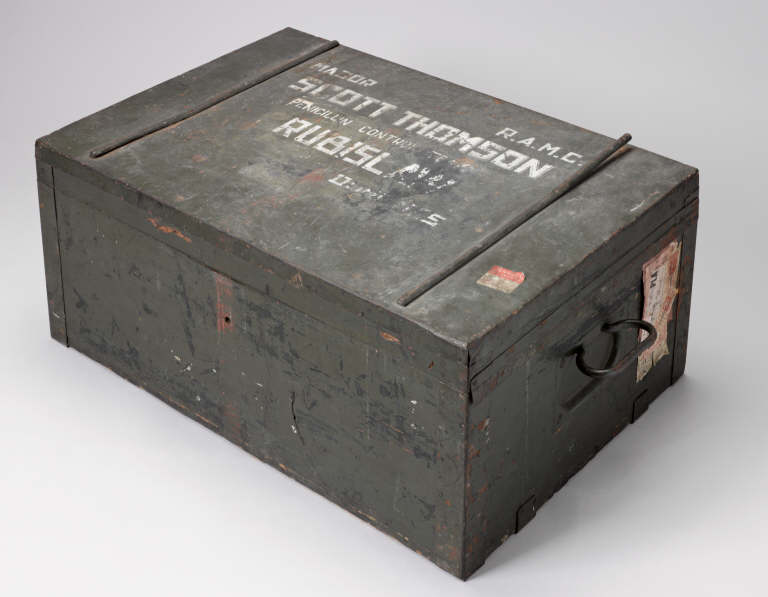Selina Hurley, Assistant Curator of Medicine, takes a look at the story behind a new addition to our collections.
One of the most enjoyable parts of a curator’s job is acquiring objects which become part of the national collections. Not only do we go out and actively seek objects but we also get offered some real gems. Recently arrived at the Science Museum is this rather wonderful object.

Major Scott Thomson (1909-1992), a bacteriologist, used this chest was used to carry supplies of penicillin to combat gas gangrene during the Second World War.

Scott Thomson’s career during the Second World War began as Pathologist to various military hospitals until 1943 when he was appointed by the War Office to be bacteriologist to the Penicillin Research Team. Thomson was posted to Algiers in May 1943 with surgeon Ian Fraser after under going special training at Oxford with Howard Florey.
On returning to Britain with the successful results of his trials, a decision was taken by the MRC Penicillin Committee to concentrate supplies of penicillin in one area of main battle activity in Italy. In December 1943 he was posted to Monte Cassino and according to his obituary in the Journal of Medical Microbiology he was responsible for all of the world’s supply of penicillin during those months – a fact his daughters remember him retelling.

Like many of his contemporaries, Scott Thomson talked little about his time during the Second World War. However, I was lucky enough to meet Major Scott Thomson’s family who delighted me with the snippets of information that they had about his experiences.
Consisting of just five people, the Penicillin units were often at the back of every march, considered at the lower end of the army hierarchy. The lines between Allied and Axis forces were often so blurred that senior Axis officers wandered into the Allied camp.
Scott Thomson believed that the medical profession’s job was to cure and bacteriology was the main way of doing this and focussed his research into antibiotics. In the late 1960s, his daughters remember him talking about the overuse of antibiotic resistance – a subject which is always in the news.
By far, my favourite snippet the family were kind enough to share was the lyrics to Song for Penicillin which may have been penned by a German friend of Thomson with German, English and Italian lyrics. Although the tune is not known, but believed to be based a popular German oompah song. I’ll leave you with the chorus of the song:
German Doctor, are you willin’?
Go and try this Penicillin
This is something else than killin’ – Penicillin!
Penicillin! Penicillin!